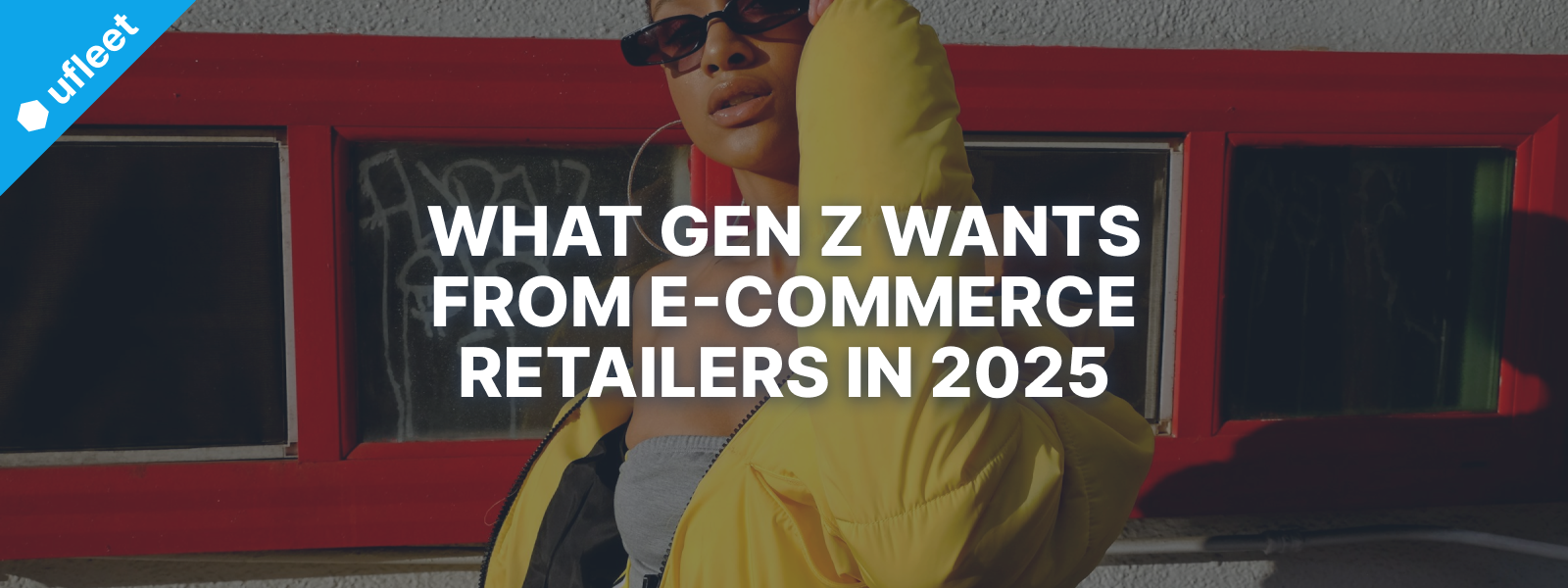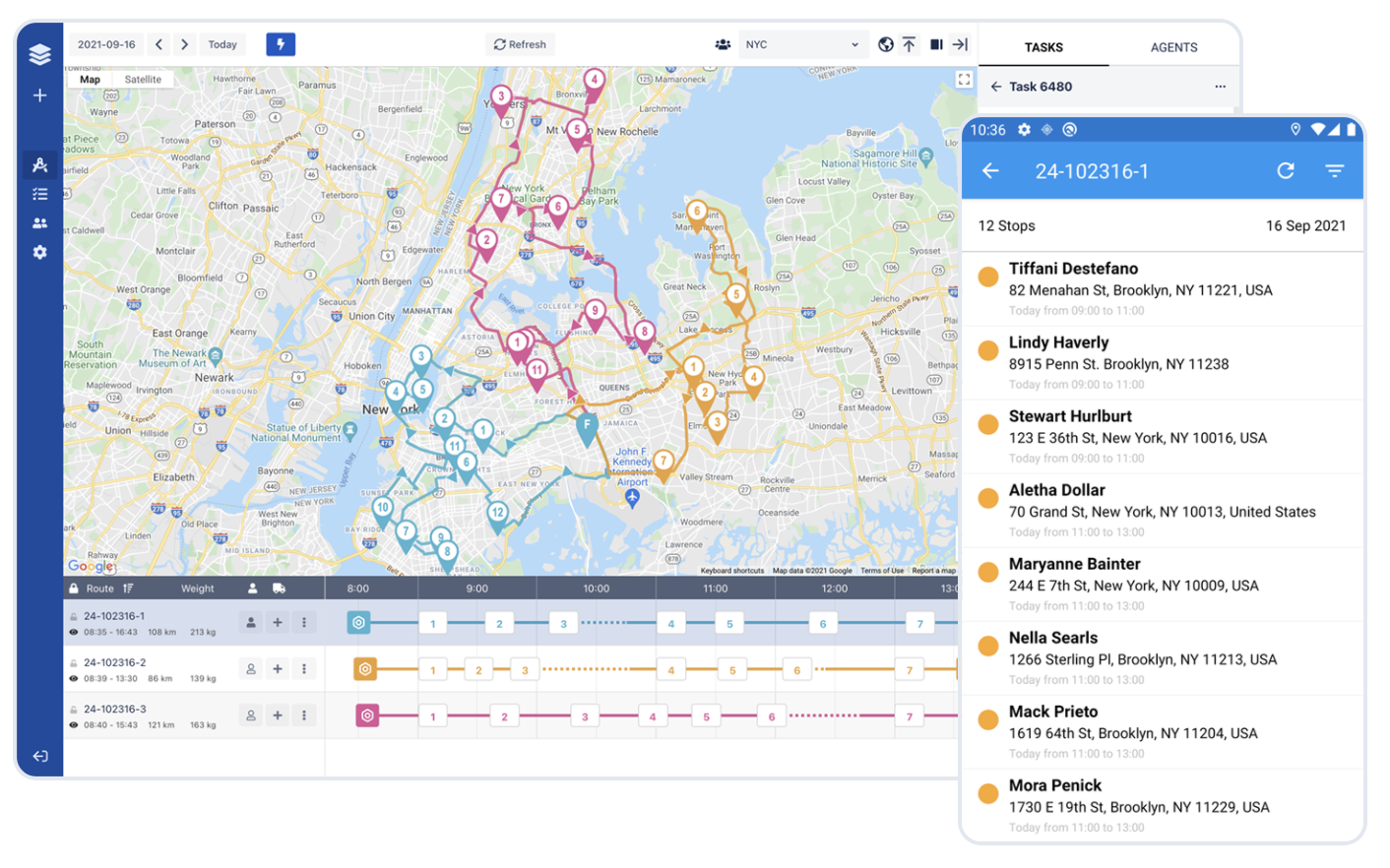Gen Z wants fast and free shipping, personalized content, focus on sustainability, and technology-driven shopping experience.
Here's What Gen Z Wants from eCommerce Retailers in 2025

Online retailers might feel overwhelmed when it comes to keeping up with the latest e-commerce trends for the upcoming 2025. Especially when targeting Gen Z—the brightest generation of all times.
Gen Z represents 27% of the U.S. population and, according to Exploding Topics, its purchasing power will grow by 400% over the next decade. BofA, on the other hand, predicts that Gen Z income will increase five times by 2030—reaching $33 trillion.
By 2031, most probably Gen Z income will surpass millennials. In other words, e-commerce retailers that want to keep making money, need to carefully study Gen Z to understand and cater the needs of the young generation.
In this blog post, you'll find the top 8 key aspects that matter to Gen Z and that you can incorporate in your e-commerce strategy for 2025:
- Super fast shipping
- Free shipping
- Hyper personalization
- Seamless omnichannel experience
- Sustainable practices
- Virtual try-on and augmented reality
- Voice-enabled shopping
- Enhanced transparency
Super fast shipping
According to a recent survey conducted by Salesforce 64% of Gen Z anticipate their orders to be delivered within two days, if not faster. Meeting these expectations is crucial for online retailers that want to gain a competitive edge.
Another study by Uber Direct states that 96% of the 18-26-year-olds consider same-day delivery as important. They are also more likely to pay for expedited shipping.
Think of Amazon Prime's same-day or one-day shipping service. That's a great example that sets the standard high.
There are two main strategies for achieving fast delivery:
- Strategy 1: Partner with couriers that provide expedited delivery services.
- Strategy 2: Handle deliveries in-house so you can control the speed of delivery.
The first and most common option brings less workload for retailers as the logistical problems are outsourced. But the downside is that you don't have much control—for example, on how packages are handled to the customer.
The second and less common option allows you to have full control over the entire delivery process—from how you load your vehicles, to how carefully you transport packages, to how polite delivery drivers are to your customers, and most importantly—how fast you deliver them.
The decision between in-house vs outsourced deliveries depends on factors such as your business model, product type, shipping volumes, whether you have the resource and expertise to handle logistics, etc.
For example, if you own a luxury home decor shop, you will benefit most from managing deliveries in-house. Such items need special care and attention, and you'll have peace of mind that your products are handled in delicate manner reflecting my brand.
And avoid absurd deliveries like this one:
@gluttonous.meatbag Guy must have been an ex-FedEx worker manhandling packages like this… UPS, you’re better than this! Gotta emphasize the importance of treating packages with respect… #UPS #Fedex #Shipping #USPS #Postage #Christmas #Holiday #Mail #SmallBusiness #FYP #ForYouPage
♬ Oh No - Kreepa
Free shipping
According to the same Salesforce study mentioned above, 67% of Gen Z customers expect free shipping as a standard offering. And while free shipping is a customer magnet, retailers need to navigate the financial side of this perk.
Covering the cost of free shipping requires a thoughtful approach to maintain a healthy bottom line. Retailers can consider a few strategies to balance customer satisfaction with cost optimization.
- Incorporating the cost of shipping into product price: This is a common practice. Adjusting product prices allows retailers to absorb the shipping expenses without explicitly charging customers. However, it's essential to strike a balance to remain competitive and not drive customers away with prices that are unreasonably high.
- Setting a minimum order value: This tactic ensures you cover the shipping expenses only in situations, in which it's profitable for you. It also encourages customers to spend more which offsets the shipping costs.
- Free shipping for loyalty program members: This tactic encourages people to join your loyalty programs, newsletter list, community, etc—a win-win situation, in which they receive certain benefits, including free shipping, and you get the chance to promote your products, events, and sales.
Managing returns expenses is another crucial aspect retailers need to include in the free shipping strategy. Establishing clear return policies, including who covers return shipping costs, can help mitigate potential losses, and set expectations right.
Some retailers choose to deduct return shipping costs from the refund amount, ensuring that the customer bears the expense if they decide to return the product. Some provide returns free of charge. Do the math and see what will work in your situation.
Hyper personalization
Gen Z seeks and expects extremely personalized online shopping experience. In fact, 75% of Gen Z are more likely to make a purchase if they can customize the product and 45% of Gen Z will abandon a website if it cannot predict their needs and preferences.
To meet the immense demand for personalization, online retailers should consider AI and data analytics seriously. This move will help them gather insights into individual customer preferences and purchase patterns.
Investing in data analytics equips retailers with a deeper understanding of what makes their customers tick. It's not just about understanding what customers bought before. It's about predicting what they'll want next.
Beyond the basics, this information becomes a goldmine for crafting personalized product recommendations, tailored discounts, and even customized packaging.
Additionally, geolocation data can further refine the personalization process. Retailers can tailor offerings based on a customer's location, promoting items relevant to local trends or weather conditions.
Seamless omnichannel experience
Gen Z shoppers want the freedom to connect with brands seamlessly. This means using mobile apps, websites, social media, and in-store visits.
Moreover, chatbots on websites and mobile apps can enhance customer support and engagement. These AI-powered assistants provide instant responses to queries and improve the overall shopping experience.
Additionally, useful features like click-and-collect or curbside pickup can kick the customer experience up a notch. Many successful brands are leveraging social commerce, allowing users to purchase products directly through social media platforms.
Augmented reality (AR) and virtual reality (VR) are gaining traction in the retail space. Brands like IKEA are using AR to let customers virtually place furniture in their homes before buying. This kind of tech adds a futuristic touch to the shopping experience — something that Gen Z tends to appreciate.
Sustainable practices
Sustainability holds significant weight for Gen Z customers. A Nielsen study reveals that 73% of Gen Z shoppers are ready to pay more for eco-friendly products.
For online retailers, making a positive impact is as straightforward as adopting eco-friendly packaging and delivery solutions. This can mean opting for biodegradable or recyclable materials, showcasing a commitment to environmental responsibility.
Moreover, delivery operations can also go green. For instance, optimizing delivery routes not only speeds up deliveries but also reduces carbon emissions.
Virtual try-on and augmented reality
Augmented reality (AR) and virtual try-on technologies are not just futuristic concepts but are becoming mainstream in e-commerce. These technologies address the challenge of the inability to physically interact with products in online shopping.
For example, AR can enable customers to see how a piece of furniture would look in their living room or how a pair of glasses would fit their face. This interactivity not only enhances customer experience but also significantly reduces return rates, which is beneficial for both customers and retailers.
The adoption of these technologies is a testament to a brand's commitment to innovative customer experiences.
Voice-enabled shopping
Voice commerce is rapidly gaining traction. The voice shopping market is expected to reach $40 billion by 2024, driven by the increasing adoption of smart speakers and voice assistant.
According to Mailmodo, 64% of the Gen Z population in U.S. will use a voice assistant regularly by 2027. Voice assistant shopping aligns with Gen Z's expectation for speedy and convenient digital experience. It fits with their fast-paced lifestyle and allows them to shop while engaged in other acitivities.
Retailers can capitalize on this trend by optimizing their websites for voice search. This includes ensuring product information is clear, integrating with popular voice assistants, and regularly updating product databases to provide accurate and quick responses to voice queries.
Enhanced transparency
Gen Z values authenticity and transparency in brands. This extends to every aspect of the e-commerce experience, from the accuracy of product descriptions to ethical business practices.
Retailers must ensure clear communication regarding product sourcing, pricing, and any associated ethical practices. Customer service plays a crucial role, with prompt responses and proactive problem-solving being key to maintaining a positive relationship with Gen Z customers.
Incorporating user feedback and engaging with customers on social media platforms are effective strategies to demonstrate transparency and build trust.Key takeaways
Key takeaways
In the world of online shopping, understanding and adapting to the needs of Gen Z isn't just a trend—it's a necessity. From speedy and free shipping to personalized experiences, retailers need to adapt in order to win Gen Z shoppers.
Sustainable practices are not only good for the planet but also a strong selling point too. Adoption of AR, voice-enabled shopping, and transparent communication are also a must.
But more than anything else, it's about building relationships. That's what will set successful online retailers apart in this fast-paced world.
If you found this post helpful, don't forget to hit the subscribe button for more valuable insights in the future.
Never miss a post
You may also like…
 Tips & Know-How5 Ways to Reduce Carbon Emissions in Logistics in 2025
Tips & Know-How5 Ways to Reduce Carbon Emissions in Logistics in 2025You too can reduce costs and improve efficiency with Ufleet
- plan and optimize delivery routes
- manage and empower drivers
- enhance customer experience
- make data-driven business decisions
We’d love to learn about your challenges.
Leave your email and we’ll get back to you.

